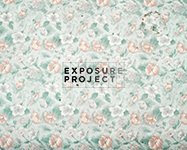This coming Fall & Winter will provide the Photography world with an impressively diverse, albeit large, amount of new monographs. After scouring the websites of some of my favorite publishers, I found new offerings from both seasoned veterans and an array of contemporary, international photographers.
Aperture offers
Richard Ross' Architecture of Authority, a collection of photographs exploring architecturally dominant spaces and the psychological power they wield over the people who inhabit them. Ross photographed a myriad of politically charged spaces including, the Iraqi National Assembly Hall, segregation cells at Abu Ghraib and capital punishment death chambers. These images investigate the abuse of power and loss of personal freedom in a fear-based, post 9/11 world. In addition Aperture will also publish
LS/S, the fist monograph from German photographer
Beate Gütschow. In the tradition of Lewis Baltz & Bernd and Hill Becher, Gütschow has created two accompanying bodies of work assessing mankind's relationship with nature. In the series (LS), pastoral scenes are seamlessly collaged to create the "perfect" manifestation of nature. These images are juxtaposed in the series (S), which depict utilitarian structures in Urban environments. Richard Misrach's
On The Beach and Sylvia Plachy's
Going On About Town: Photographs From the New Yorker will also be published this fall by Aperture.

 Twin Palms
Twin Palms will publish
Jean Luc Mylayne's endearing book of photographs depicting bird-life in his native France. Painstakingly photographed over the course of 30 years, Mylayne often returned everyday to locations waiting for his "actors" to pass by his lens. With intimacy and respect he has captured the complex workings of the avian kingdom. Twin Palms will also reissue
Bill Burke's seminal book
I Want To Take Picture, a visually raw document of Southeast Asia in the early 80's. Burke focused heavily on the collapse of the Khmer Rouge regime and the affects this had on the Cambodian people.


To round out the fall/winter line-up,
Steidl is releasing an impressive array of monographs into the photography world. Some of the highlights include,
Alec Soth's Dog Days Bogota; a portfolio of photographs taken in Columbia's capital city while waiting for the adoption of his daughter to be finalized. Soth set out to create a photo album for his young daughter, documenting the evident hardship in her birth city. Both
Ray Metzker and
Harry Callahan are also being given the monograph treatment. Metzker's
Light Lines compiles the retrospective work of a truly unique and influential artist. This publication is especially exciting, as Metzker's work (in book form) has been extremely hard to find, and when found, extraordinarily expensive. Callahan's posthumous collection
Eleanor features photographs of his wife, who became one of his greatest photographic inspirations. Other books of note are: Chauncey Hare's
Protest Photographs which depict interiors of working-class homes and workplaces across the United States in the 1960's & 70's, a limited edition printing of photographs by
David Lynch entitled
Snowmen, and
Lewis Baltz's project
Sites of Technology will finally be available in print form. This body of work explores Baltz's journey through technological workplaces throughout Europe and Japan in the early 1990's, raising questions about man's creation and subsequent dependence on man-made technologies.
For a more comprehensive list of upcoming titles, you can visit the Steidl website and download the 93 page PDF (that's right 93!), which will undoubtedly leave no question unanswered.



From Top to Bottom:
Richard Ross, Los Angeles Police Department, Fifth and Wall Street
Beate Gütschow, Untitled (LS # 14)
Richard Misrach, Untitled #696-05, 2005
Bill Burke, Boy with bicycle, at the Bayon, Angkor Wat, Cambodia
Alec Soth, Image From The Series
Dog Days Bogota Ray Metzker, Philadelphia, 1963
Lewis Baltz, Image From the Series
Sites of TechnologyAll Images Copyright the Artists






_600.jpg)













































